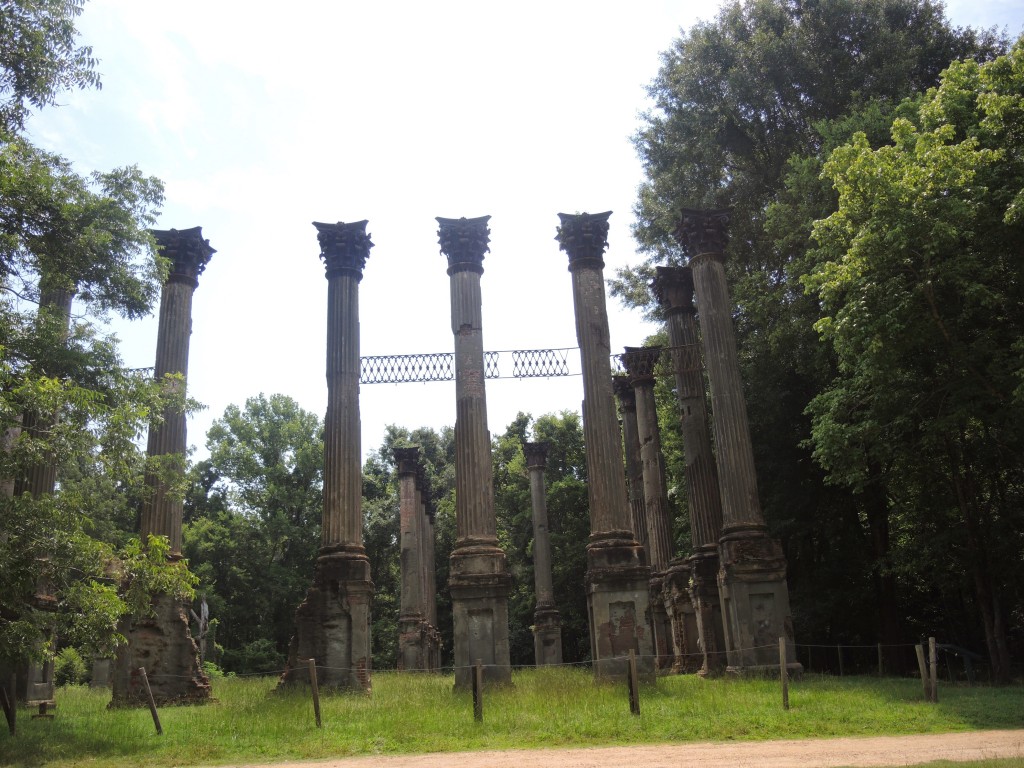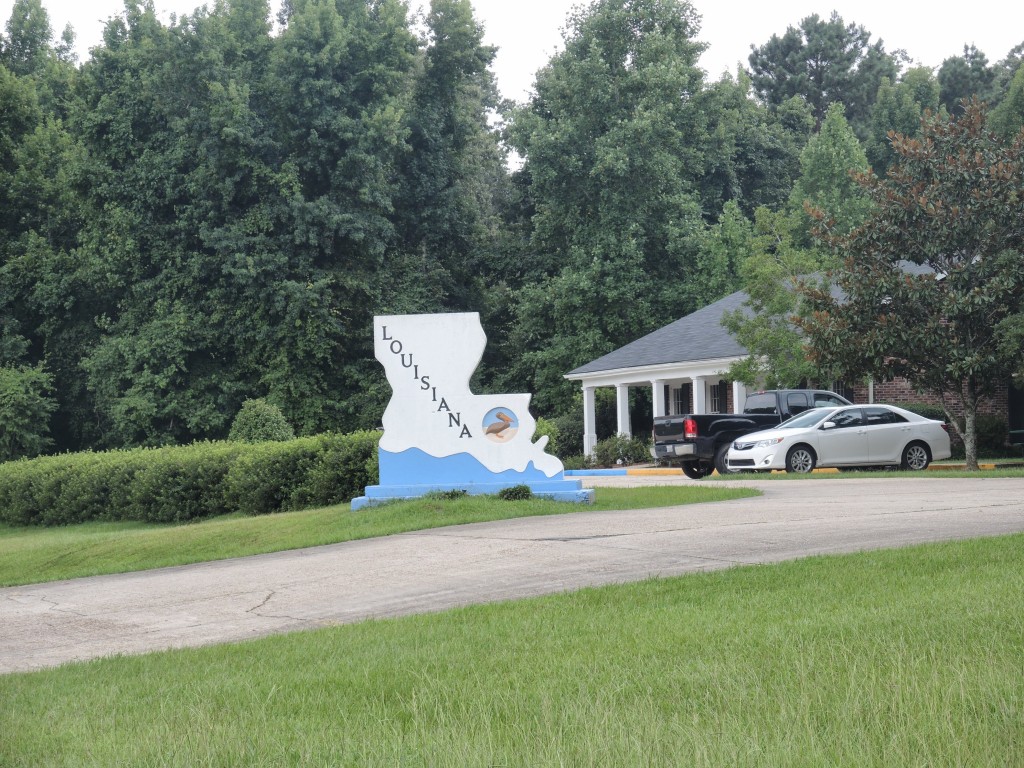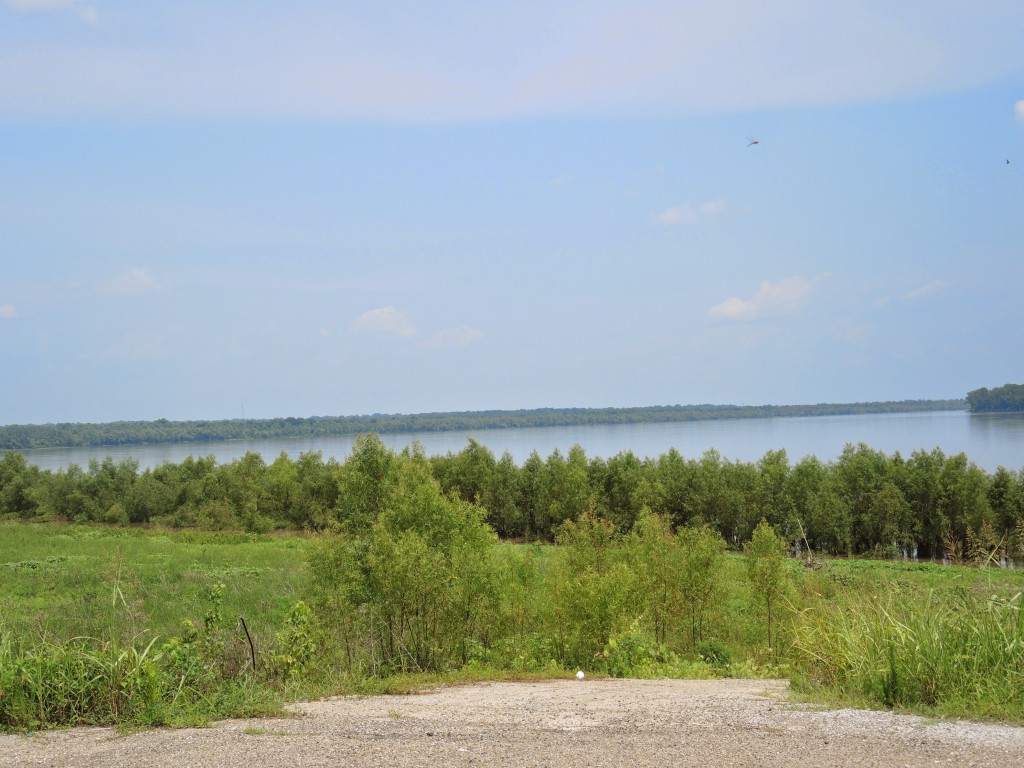As the crow flies, the Windsor Ruins are about 12 miles from Port Gibson. By the Natchez Trace, the drive is about twice as far. The Natchez Trace Parkway begins (or ends) in Fairview, Tennessee (near Nashville) and ends (or begins) in Natchez, MS. The two-lane road is designated as an All-American Road and is managed by the National Park Service. For those who live in or have traveled through my part of the country, consider it similar to Skyline Drive and the Blue Ridge Parkway.
The drive is a beautiful one. At times the trees are so thick that they create the sensation of driving through a tunnel as their branches reach out and intertwine in a leafy embrace over and across the road.
Windsor Ruins is located near Alcorn State University and some of its remains – notably portions of a balustrade and a set of wrought iron stairs – can be found in that institution’s chapel.
Although their use in Raintree County, Ghosts of Mississippi, and other films might have provided reason enough to stop there, their history also drew me in. Approaching the ruins along Rodney Road, I was fortunate I was driving below the posted speed limit. Otherwise, I might have missed the small sign at the end of the dirt road that leads a quarter mile or so back to the site.
When you read of this site described as ruins, take that description literally. In 2014 they look like this:

The one-time Greek Revival mansion was constructed for Smith Daniell using largely slave labor. It was the largest antebellum mansion in Mississippi with 29 columns (23 of which remain) each 45 feet high. Each of the mansion’s 23 rooms had its own fireplace and it featured several interior baths supplied with water from a tank on the roof.
The third floor of the mansion had an observatory that was used by Confederate troops during the Civil War and Mark Twain after it. The Union Army used the house as a field hospital and observation station following their victory at Port Gibson. While the home survived the war, it didn’t survive a careless smoker in 1890 when, on the third floor, a guest’s cigar ignited a destructive conflagration.
When I finished at Windsor, I hopped back onto the Natchez Trace for the 30-mile ride to Emerald Mound. Because of my experiences at the mound sites I’d previously visited, I had elevated expectations for this mound.
Emerald Mound in Natchez is the second largest mound in the United States. (I’d rather foolishly passed up the opportunity to visit the largest mound in North America – Cahokia Mounds – which is in Illinois a mere 10 miles east of St. Louis.) At 35 feet high, it’s not as tall as the central mound at Winterville. However, two smaller mounds sit atop the main mount making its summit over 60 feet high and, with a base that measures 770 feet by 435 feet, it’s a most impressive site that covers nearly eight acres.

The ancestors of the Natchez tribe constructed the mound sometime in the mid to late thirteenth century and used the site as a ceremonial center until the early seventeenth century. Unfortunately, my visit came on mowing day and the constant drone of the groundskeeper’s John Deere riding mower severely limited my ability to make any connection with the antiquity of the place. My visit ended up being much shorter than I’d planned or expected.
The rumblings of my stomach indicated that the morning had transitioned to afternoon, so the time was ripe for me to return to Highway 61 and find the two restaurants south of Natchez – one for lunch and the other for a photo op – that I’d put on the day’s agenda. I planned to eat at Roux 61 and it turned out to be an excellent choice. I couldn’t quite bring myself to try the shrimp and alligator sausage cheesecake appetizer. Opting for only an entrée, I had the Catfish LeBeaux (blackened not fried) that was served with rice and a tasty crawfish etouffee. Though they had a nice selection of beers, because it was mid-afternoon and I was driving, I chose abstinence going with the Yankee’s choice of unsweetened iced tea.
Continuing south from Roux 61 for under a mile on Highway 61 there is another restaurant open only for lunch. Had it not been mentioned in one of the books I’d read prior to embarking on the trip, I doubt I would have sought it out. The restaurant is called Mammy’s Cupboard and although I’d seen photos of it and understood why it qualifies as a “roadside attraction,” I don’t know that I was fully prepared for the reality of it. While I knew I couldn’t bring myself to eat there, I didn’t expect to feel a bit sullied simply from taking a picture or two. I invite you to see it for yourselves.
After lunch, I experienced one of the trip’s odd moments. I knew the distance to cross into Louisiana was between 35 and 40 miles so, after driving for roughly half an hour, I began to look for the Welcome To Louisiana sign. Those of you who have been following along know that after neglecting to take that picture entering Pennsylvania, I tried to take a picture as I entered each state along the way.
Trying to remain alert for the sign, I suddenly saw a Louisiana Welcome Center and thought, “What the heck! How did I miss the welcome sign?” I pulled in and asked if the road had such a sign. Receiving assurances that it did, I turned around, drove back into Mississippi, then crossed the road again to return to Louisiana. If the sign exists, it’s either well camouflaged or very small because I never saw it. Thus, for the Pelican State, it’s this sign in my ‘Welcome To’ folder of photographs you see.

With some killable time on my hands, I decided to drive through the town of St. Francisville, Louisiana a quiet and charming spot responsible for one of the most unusual events of the Civil War. It’s known locally as “The Day the War Stopped.” In a nutshell, here is what happened:
Admiral David Farragut (a name familiar to Washingtonians) commanded a Union fleet on the Mississippi attempting to cut off Confederate supply sources from the west. Lt. Commander John Hart died aboard Farragut’s flagship, the U.S.S. Albatross while it was anchored at Bayou Sara (where the area had originally been settled before the town of St. Francisville arose on the bluffs above the river).
Hart was a Freemason as were several other members of the crew. They wanted to give Hart a traditional Masonic burial and sent several people to the town under a flag of truce. There was a Masonic Lodge in St. Francsville, Feliciana Lodge No. 31 F & AM, and although the Master of the Lodge was serving in the Confederate Army in some distant place, the members were able to contact the Senior Warden, one W.W. Leake, who was serving close by.
Leake knew it was his obligation to accord a Masonic burial to a brother mason without regard to their relations in the broader world. Arrangements were made and all fighting stopped. The Masons from the crew of the Albatross brought Hart’s body up the bluffs from the river to Grace Episcopal Church and Hart was given a full Episcopal and Masonic service by Pastor D.S. Lewis before being buried in the church’s cemetery. The war resumed the following day.
The town still honors this event with an annual celebration. Today, this second oldest incorporated town in Louisiana, is probably best known for its National Register Historic District of over 140 structures. Many of these can be seen on a leisurely walking tour.
The women at the Museum and Visitors Center the West Feliciana Historical Society provided much more information about the town than I really wanted or needed to know but they did give me directions to Grace Episcopal Church and the Masonic Lodge. They also told me that if I followed Ferdinand Street to its end, I’d reach the Mississippi and that it’s a trip the old folks in the town regularly take. That is, they simply drive down Ferdinand until the street meets the river. Since I was beginning to feel a bit old myself by this point in the trip, I made this my first priority.

This is the end of Ferdinand Street.
I gave some thought to doubling back some 25 miles north from St. Francisville to see the Louisiana State Penitentiary in Angola but, although I was beginning to feel a bit like my own Dead Man Walking, I decided against it. It’s just a prison after all.
When I left St. Francisville, I proceeded directly to New Orleans passing through but not stopping in Baton Rouge where I bumped up against some heavy traffic for perhaps the only time on the trip. I’ll cover my time in the Big Easy in my next post.